
Sid Meier's Alpha Centauri is a 4X video game, considered a spiritual sequel to the Civilization series. Set in a science fiction depiction of the 22nd century, the game begins as seven competing ideological factions land on the planet Chiron ("Planet") in the Alpha Centauri star system. As the game progresses, Planet's growing sentience becomes a formidable obstacle to the human colonists.

A computer mouse is a hand-held pointing device that detects two-dimensional motion relative to a surface. This motion is typically translated into the motion of the pointer on a display, which allows a smooth control of the graphical user interface of a computer.

A pointing device is a human interface device that allows a user to input spatial data to a computer. CAD systems and graphical user interfaces (GUI) allow the user to control and provide data to the computer using physical gestures by moving a hand-held mouse or similar device across the surface of the physical desktop and activating switches on the mouse. Movements of the pointing device are echoed on the screen by movements of the pointer and other visual changes. Common gestures are point and click and drag and drop.
Real-time strategy (RTS) is a subgenre of strategy video games that does not progress incrementally in turns, but allow all players to play simultaneously, in "real time". By contrast, in turn-based strategy (TBS) games, players take turns to play. The term "real-time strategy" was coined by Brett Sperry to market Dune II in the early 1990s.
Legend Entertainment Company was an American developer and publisher of computer games, best known for creating adventure titles throughout the 1990s. The company was founded by Bob Bates and Mike Verdu, both veterans of the interactive fiction studio Infocom that shut down in 1989. Legend's first two games, Spellcasting 101: Sorcerers Get All the Girls and Timequest, had strong sales that sustained the company. Legend also profited from negotiating licenses to popular book series, allowing them to create notable game adaptations such as Companions of Xanth and Gateway. Legend also earned a reputation for comedic adventures, with numerous awards for Eric the Unready in 1993. As the technology of the game industry changed, Legend continued to expand its game engine to take advantage of higher graphical fidelity, mouse support, and the increased media storage of the compact disc.

Dungeon Siege is an action role-playing game developed by Gas Powered Games and published by Microsoft in April 2002, for Microsoft Windows, and the following year by Destineer for Mac OS X. Set in the pseudo-medieval kingdom of Ehb, the high fantasy game follows a young farmer and her companions as they journey to defeat an invading force. Initially only seeking to warn the nearby town of the invasion of a race of creatures named the Krug, the farmer and the companions that join her along the way are soon swept up in finding a way to defeat another race called the Seck, resurgent after being trapped for 300 years. Unlike other role-playing video games of the time, the world of Dungeon Siege does not have levels but is a single, continuous area without loading screens that the player journeys through, fighting hordes of enemies. Also, rather than setting character classes and manually controlling all of the characters in the group, the player controls their overall tactics and weapons and magic usage, which direct their character growth.

Battlezone is a first-person shooter real-time strategy video game, developed and published by Activision. It was released for Microsoft Windows in 1998. Aside from the name and presence of tanks, this game bears little resemblance to the original arcade game of the same name. Activision remade it into a hybrid of a tank simulation game, a first-person shooter and a real-time strategy game. In Battlezone the player is controlling everything on the battlefield from the first person view.
Tactical role-playing games, also known as strategy role-playing games and in Japan as simulation RPGs, are a video game genre that combines core elements of role-playing video games with those of tactical strategy video games. The formats of tactical RPGs are much like traditional tabletop role-playing games and strategy games in appearance, pacing, and rule structure. Likewise, early tabletop role-playing games are descended from skirmish wargames such as Chainmail, which were primarily concerned with combat.
The following outline is provided as an overview of and topical guide to video games:
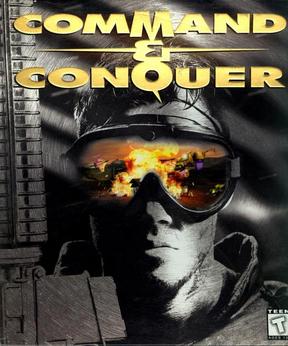
Command & Conquer is a real-time strategy video game developed and published by Westwood Studios in 1995. Set in an alternate history, the game tells the story of a world war between two globalized factions: the Global Defense Initiative of the United Nations and a cult-like militant organization called the Brotherhood of Nod, led by the mysterious Kane. The groups compete for control of Tiberium, a mysterious substance that slowly spreads across the world.
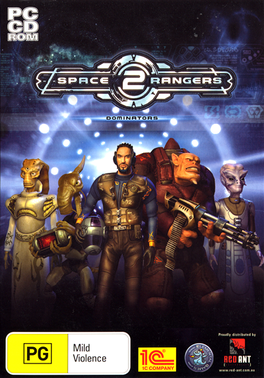
Space Rangers 2: Dominators, released in North America with the subtitle Rise of the Dominators, is a multi-genre science fiction computer game developed by Elemental Games for Windows and first published in 2004 by 1C Company. The player takes the role of a spaceship pilot, and may explore, trade, engage in space and ground-based combat, and undertake various types of missions. Space Rangers 2 is the sequel to the 2002 computer game Space Rangers.
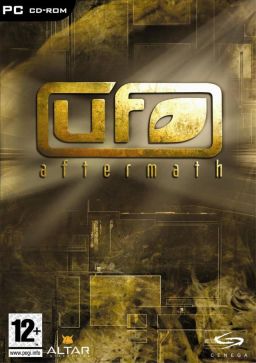
UFO: Aftermath is a 2003 real-time tactics/turn-based strategy video game created by ALTAR Interactive. It is a homage to the X-COM game series, with roots in the unfinished game The Dreamland Chronicles: Freedom Ridge. It was followed by two sequels, UFO: Aftershock (2005) and UFO: Afterlight (2007).
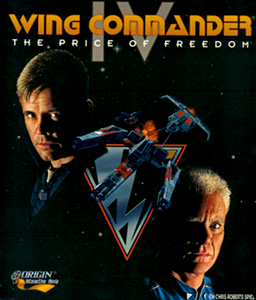
Wing Commander IV: The Price of Freedom is the fourth main game in the Wing Commander science fiction space combat simulator video game series, produced by Origin Systems and released by Electronic Arts for the PC in 1996 and the Sony PlayStation in 1997.

Mortyr 2093-1944, also known as simply Mortyr, is a first-person shooter computer game published by Interplay and developed by Polish developer Mirage Media and released in 1999. One of the earlier Polish developed first-person shooters for Microsoft Windows, the game follows a son of a scientist transported back in time to World War II to avert the Axis victory and features levels set both in World War II and the future. The game received unfavorable reviews at its launch, with the game garnering some positive coverage from the Polish video game press and widely panned abroad.

Protostar: War on the Frontier is a 1993 science fiction video game produced by Tsunami Media that blends elements of role-playing, space exploration, space combat, and strategy. The player commands a spaceship from a first-person perspective in real-time capable of traveling to the various planets in the game world and launching an explorer vessel to traverse their surfaces. Several sentient alien races inhabit the region with whom the player interacts through friendly conversation, intense spaceship combat, or barter at their planetary trading posts. One of these races, the Skeetch, is aggressively threatening to conquer the Earth; the player has been recruited to convince the other sentient races in the region to join humanity in an alliance against the Skeetch. A secondary goal of the game is to earn money by performing actions such as selling alien lifeforms and minerals collected on planetary surfaces to obtain the funds needed to upgrade the player's spaceship and improve the odds of survival in confrontations with the Skeetch and other hostile entities. Computer Gaming World criticized the game for failing to break new ground and for its "muddled" blend of science fiction themes, but did recommend it to players new to this genre.
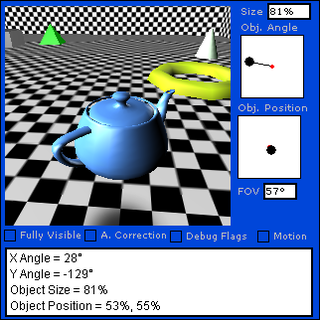
In 3D video games, a virtual camera system aims at controlling a camera or a set of cameras to display a view of a 3D virtual world. Camera systems are used in video games where their purpose is to show the action at the best possible angle; more generally, they are used in 3D virtual worlds when a third-person view is required.

The Dreamland Chronicles: Freedom Ridge is an unreleased video game for Microsoft Windows and PlayStation 2 by Mythos Games. Developed by the team which produced X-COM: UFO Defense, including lead designer Julian Gollop, the game was planned to be "a remake of the first X-COM with 3D graphics," as the first of four games planned in the new series. Cancelled in 2001, the unfinished game was later bought and partially turned into UFO: Aftermath by Altar Interactive, which was in turn itself followed by two sequels. Some elements of the game are also present in Gollop's own Phoenix Point.
Third-person shooter (TPS) is a subgenre of 3D shooter games in which the gameplay consists primarily of shooting. It is closely related to first-person shooters, but with the player character visible on-screen during play. While 2D shoot 'em up games also employ a third-person perspective, the TPS genre is distinguished by having the game presented with the player's avatar as a primary focus of the camera's view.

Uprising: Join or Die, also known as simply Uprising, is an action real-time strategy video game by American developer Cyclone Studios, released in North America on October 14, 1997 and in Japan on July 24, 1998 for Windows. The player controls a powerful combat vehicle known as the Wraith that transports rebel units onto the battlefield, fighting against the military. For the first few months of its development, it had no script written for it and as the release date neared, gameplay videos were created to demonstrate its support for the 3dfx graphics card. It received a port to the PlayStation as Uprising X, which was released in December 1998; and before that, a sequel, Uprising 2: Lead and Destroy, was released for the PC on December 9, 1998.














